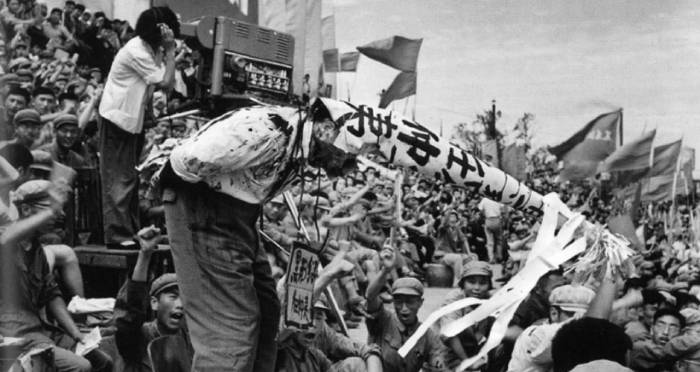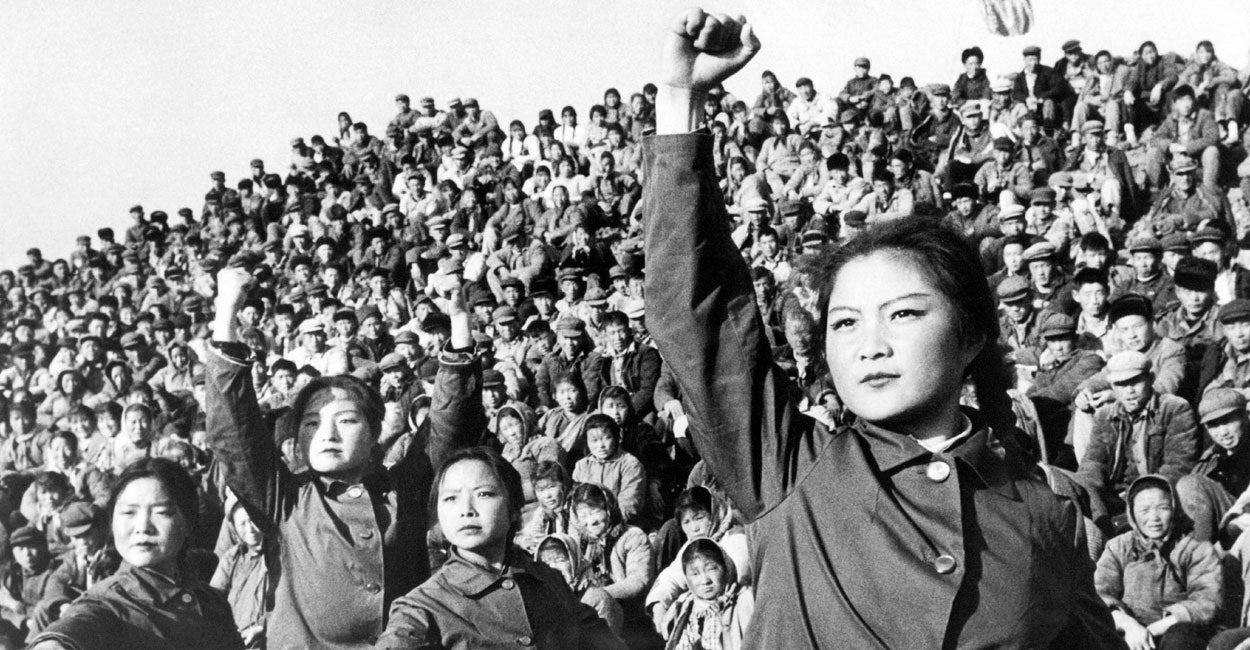

In 1960s Berkeley and Paris, students were intoxicated by the bold-seeming posturings of Maoism without ever understanding what was going on. It was time to declare the Red Guards “class enemies” and they were sent into rural exile. Ultimately, he was humiliatingly obliged to summon the army from barracks in order to restore order. Rattled by the chaos he had caused, Mao strove to retain power through his estranged wife, the poisonous ex-movie actress Jiang Qing, and her Cultural Revolutionary Committee. Workers’ committees were set up by party loyalists to represent their interests, and they joined the fray. Red Guards were locked in battle with rival factions of Scarlet Guards. However, his Stalinist economic ideas ensured that the revolution led nowhere and, within a year, China had sunk into civil war. To be sure, Mao did want to stake his claim to world leadership of the communist bloc. Propaganda poster for the Chinese People’s Liberation Army from 1971. Dikötter, who teaches in Hong Kong, has written two previous volumes chronicling the abuses of Mao’s rule and he tells us that, by the standards set by earlier atrocities, the violence of the Cultural Revolution was relatively mild.

Mao appears never to have entertained any scruples, and the story of his cruel duplicity makes for a terrific if distressing read. Those who expressed doubts were packed off to the gulag without excess ceremony. On giant wall posters, the emperor’s subjects were made familiar with the incomprehensible and arbitrary twists and turns of Maoist thought. Everyone had to wear faded cotton, black cloth shoes, caps decorated with red stars. National aluminium production went into the creation of millions of buttons. A ridiculous personality cult flourished. Ex-librarian, poet manqué, the chairman concocted slogans with the zeal and productivity of a rapper. From his huge bed, which he shared with teenage groupies, he devised his own revolutionary theatre dedicated to self-aggrandisement. To demonstrate his powers, he floated downstream for two miles of the muddy Yangtze river. But this second revolution was, above all, Mao’s reaction to the realisation that, following the Great Leap Forward, his crash programme of modernisation in which more than 40 million were starved, he had alienated even the most loyal followers.Īs Frank Dikötter aptly observes, the chairman was whimsical in his brutalist, insatiable addiction to power. These teen Red Guards were culled from the communist elite, and Mao wanted them to overturn the system he had imposed. To demonstrate his powers, Mao floated downstream for two miles of the muddy Yangtze river

In the 1960s the generation of Chinese who had supported the Communist party after Mao seized power from the nationalists in 1949 were cowed into obedience. After confessing to crimes, they were beaten up and publicly humiliated, forced to wear dunce hats in front of jeering crowds, standing immobile for hours in the painful “propeller” position, a half-stoop that wrenched their arms out of their sockets. Teachers were subjected to notorious “struggle sessions”. It was necessary to destroy the bourgeois past, and this involved the wholesale looting of shrines, the destruction of books and parchment, the smashing of ornaments and the pillaging of homes belonging to the wealthy. But Mao Zedong’s Cultural Revolution also had a darker side.

Like their western contemporaries who encountered the Beatles, they told each other that their lives were changed. He named his teenage followers Red Guards, and it was they who packed Tiananmen Square, waving copies of the Little Red Book filled with his sayings as they stood in their millions for a brief sight of him. “T o rebel is justified,” the Great Helmsman intoned.


 0 kommentar(er)
0 kommentar(er)
